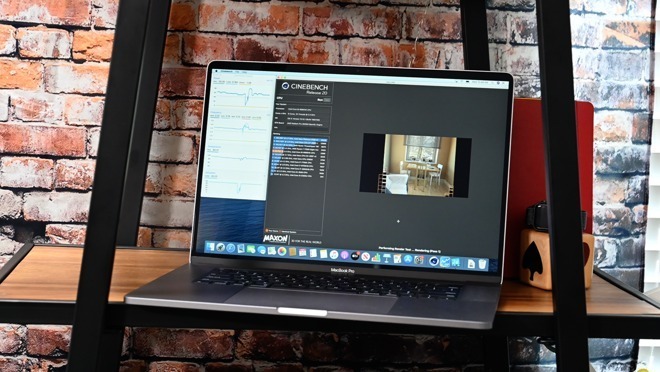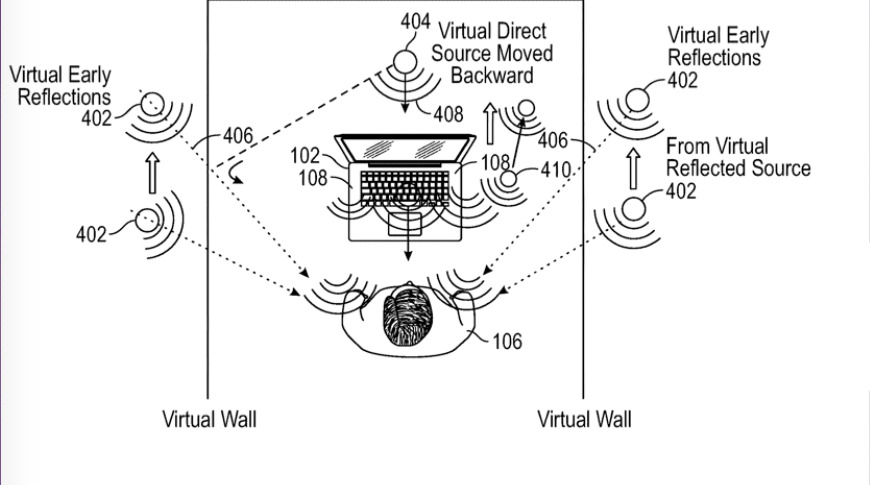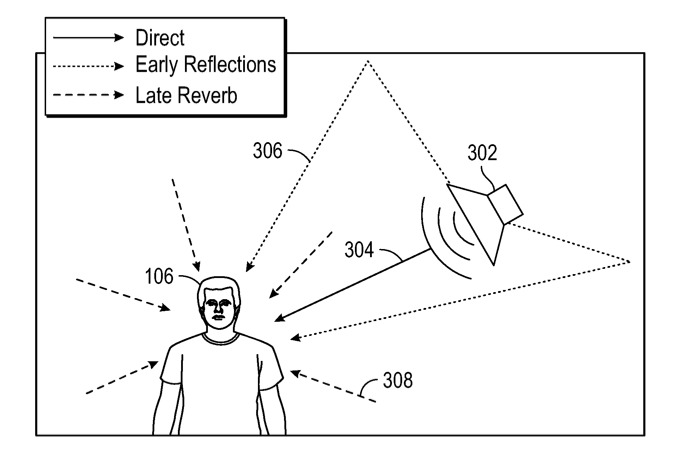Apple could manipulate traditional speakers into creating sound that appears to come from somewhere else, such as one from around a MacBook user instead of at the keyboard, to give a better audio experience.
Apple is continuing to work on improving sound quality from speakers, in particular those on MacBook Pro laptops or similar. In a new patent filing, the company describes how an audio track can be processed in such a way that it appears to be coming from "elsewhere in an indoor outdoor space [rather] than directly from a loudspeaker."
"Audio signal processing for virtual acoustics can greatly enhance a movie, a sports even, a videogame or other screen viewing experience, adding to the feeling of "being there," says Apple in US patent application number 10,524,080, entitled "System to move a virtual sound away from a listener using a crosstalk canceler."
"Various known audio processing algorithms, executed by digital processors, modify one or more recorded, synthesized, mixed or otherwise produced digital audio signals," it continues, "in such a way as to position a virtual source according to modeling that is based on human perception of sound, including the role of ear acoustics, other reflecting and absorbing surfaces, distance and angle of source, and other factors."
While the majority of the documentation describes the loudspeakers on a laptop, Apple claims that this patent covers virtual sound from any such audio source — including headphones.
"In the case of headphones, specially processed audio signals (binaural rendering) are sent to left and right ears of a listener without the crosstalk that is inevitably received by the ears when listening to stereo loudspeakers," it says.
Apple says that using "sound wave cancellation in the air surrounding the listener," the audio can be controlled.
"For viewers and listeners that prefer loudspeakers, for example those that may be built into a laptop computer, a crosstalk canceler is employed in some virtual acoustic systems to produce sounds from multiple loudspeakers in such a way that for example a 'left' audio signal is predominantly heard only at the left ear of the listener, and a 'right' audio signal is predominantly heard only at the right ear of the listener," it says.
"This allows the left and right audio signals to contain spatial cues that enable a virtual sound to be 'positioned' at a desired location between the loudspeakers."
The six inventors credited with this work have between them almost 50 prior patents in related fields, chiefly for Apple but also for Sennheiser Electronics. Martin E. Johnson alone has 38 previous patents, ranging from "correction of unknown audio content" and "Method and aparatis for estimating talker distance."
This latest patent, filed on December 31, 2019, follows two from November which are to do with converting headphones into speakers and providing better sound isolation.
Apple has also recently filed a patent for headphones that are able to detect which ear they've been put on, which would affect how audio's left and right channels would be routed.
 William Gallagher
William Gallagher









-m.jpg)






 Marko Zivkovic
Marko Zivkovic
 Christine McKee
Christine McKee
 Andrew Orr
Andrew Orr
 Andrew O'Hara
Andrew O'Hara


 Mike Wuerthele
Mike Wuerthele
 Bon Adamson
Bon Adamson




-m.jpg)



24 Comments
Lots of things get experimented with but few actually come to market. Why? Because of market realities, ROI, engineering obstacles, manufacturing problems, etc. I always start to giggle when someone starts out a post with, “It would be a simple matter for Apple to do this or that, make this or that, enable this or that.” It shows the utter cluelessness of the one posting.
"Sonic holography" has been a thing since the 70s or so. It's pretty cool. Gives you the perception of a wider soundstage without the physical distance between speakers to support it. I have a Carver C-4000 preamp (and an M-400 cube!) from the 80s which can do some pretty amazing things.